USGS Open-File Report 2011-1172
By Ellen A. Raabe, Robert D'Anjou, Domonique K. Pope, and Lisa L. Robbins
Overview | Study Locations | Seafloor Habitats | Habitat Mosaic | Resources
The seafloor of the surveyed region is characterized by several bottom types reflecting geologic, sedimentary, and biological structures such as pit-and-mound formations, exposed hardbottom, live-bottom, sandwave formations, and flat surficial-sediment deposits. Habitats are formed by biological and geochemical processes and the movement of sediment over existing bottom structures. The mingling of different habitats in one location can meet the habitat requirements of diverse species and is called a habitat mosaic.
Disclaimer: Analog-to-digital video clips with text were prepared prior to editing and cannot be changed. Therefore, there may be grammatical disparities between the edited text provided below each video and text within each video. Spelling and punctuation below each video are correct.
Moderate-Relief Live Bottom: Intermittent and isolated rock outcrops with moderate topographic relief provide substrate for coral, sponges, and other invertebrates. Often referred to as pinnacle features, the geologic structure and live benthic community attract diverse fish populations and many marine organisms.
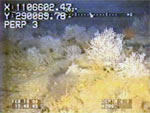 Video: Moderate-Relief Live Bottom #1 |
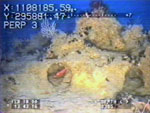 Video: Moderate-Relief Live Bottom #2 |
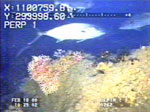 Video: Moderate-Relief Live Bottom #3 |
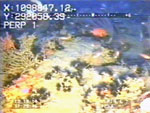 Video: Moderate-Relief Live Bottom #4 |
Low-Relief Live Bottom: Areas of low-relief hardbottom contain a wide array of biological assemblages such as seagrass beds, sponges, and coral attached to the exposed hard substrate. These features attract a number of fish species and marine organisms.
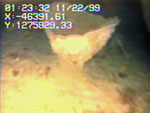 Video: Low-Relief Live Bottom #1 |
 Video: Low-Relief Live Bottom #2 |
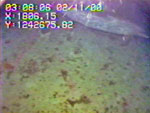 Video: Low-Relief Live Bottom #3 |
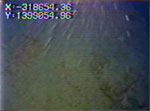 Video: Low-Relief Live Bottom #4 |
Exposed Hardbottom: Exposed hardbottom is bare bedrock with low to moderate relief, which does not currently support live bottom.
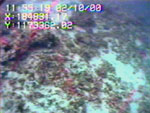 Video: Exposed Hardbottom #1 |
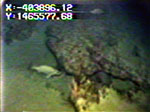 Video: Exposed Hardbottom #2 |
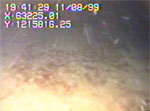 Video: Exposed Hardbottom #3 |
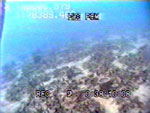 Video: Exposed Hardbottom #4 |
Sandwave formations on the West Florida Shelf are often referred to as "ridge fields." Rows of elongated low-relief sand waves have formed on the limestone seafloor, with multiple orientations to the coast. Exposed hardbottom, low-relief live bottom, or shell hash may be visible in trough depressions flanked by ridges of reworked sediment. (See Hine and others, 2001)
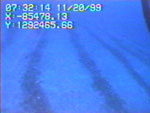 Video: Sandwave Habitat #1 |
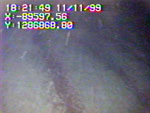 Video: Sandwave Habitat #2 |
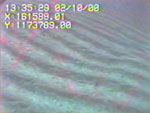 Video: Sandwave Habitat #3 |
The pit-and-mound formations are found in lightly undulating topography of unconsolidated fine-grained sediments. Their size, distribution, and type vary from regularly spaced small pits or pockmarks to irregularly spaced and gently sloping clusters of varying sizes, to larger, steep-sided pits with embedded rock or rock bottom. Whether the origin of pit-and-mound habitat is gas, aquifer seep, or bioturbation, the habitat is actively used by many fish species. Burrowing and excavation by fish may help to create and maintain this habitat. (See Scanlon and others, 2005).
 Video: Pit-and-Mound Habitat #1 |
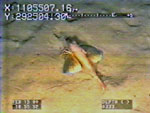 Video: Pit-and-Mound Habitat #2 |
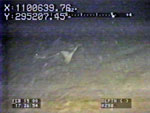 Video: Pit-and-Mound Habitat #3 |
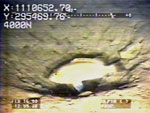 Video: Pit-and-Mound Habitat #4 |
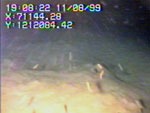 Video: Pit-and-Mound Habitat #5 |
A flat bottom is a level surface of unconsolidated mud or sand that lacks sedimentary or geological structure. This unremarkable surface serves as substrate for algal growth and supports echinoderms (starfish, sea urchin, sand dollar), infauna (benthos living within the sediments), and the fish that prey on them.
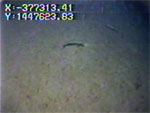 Video: Flat Mud Bottom #1 |
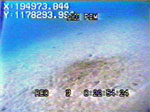 Video: Flat Bottom Habitat #2 |